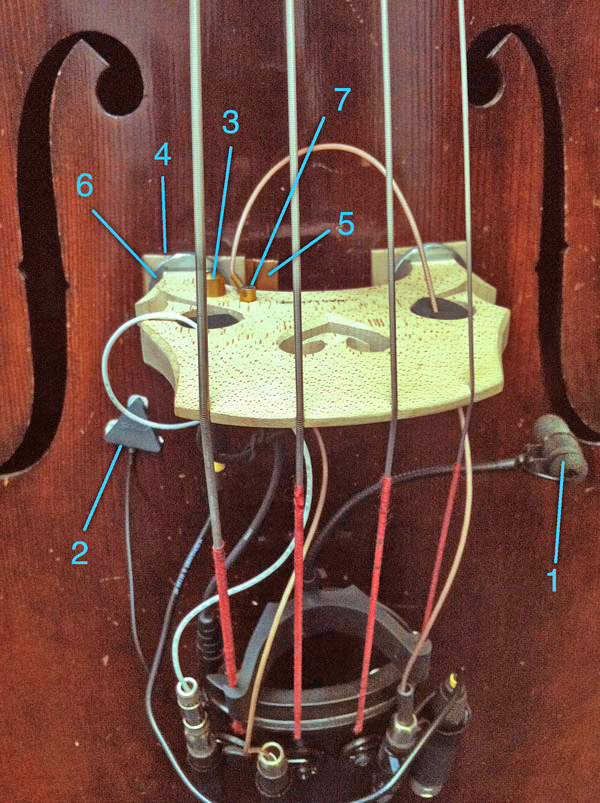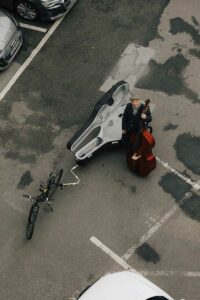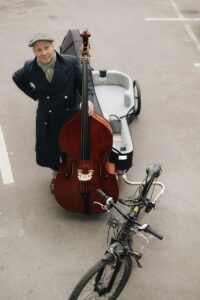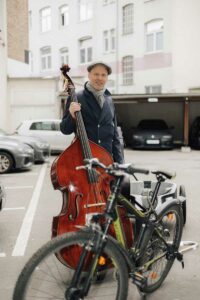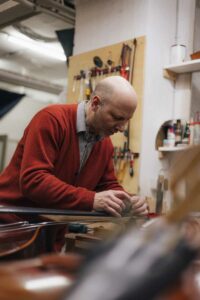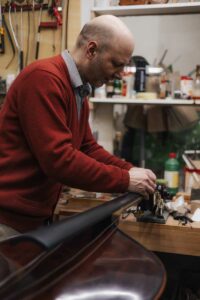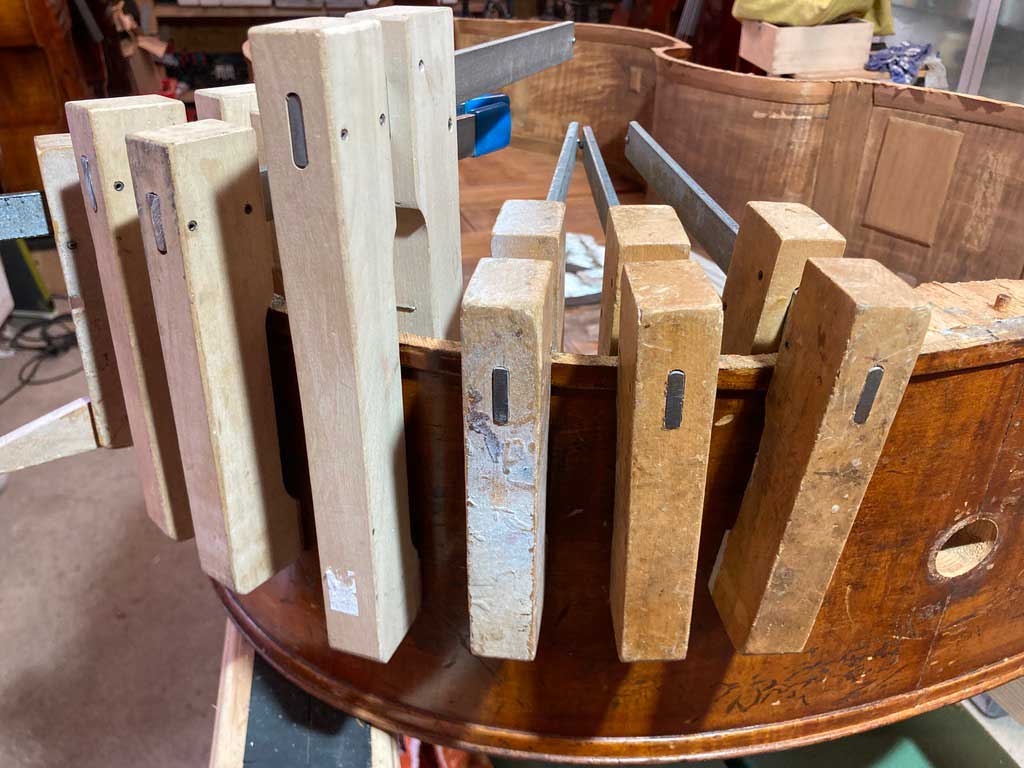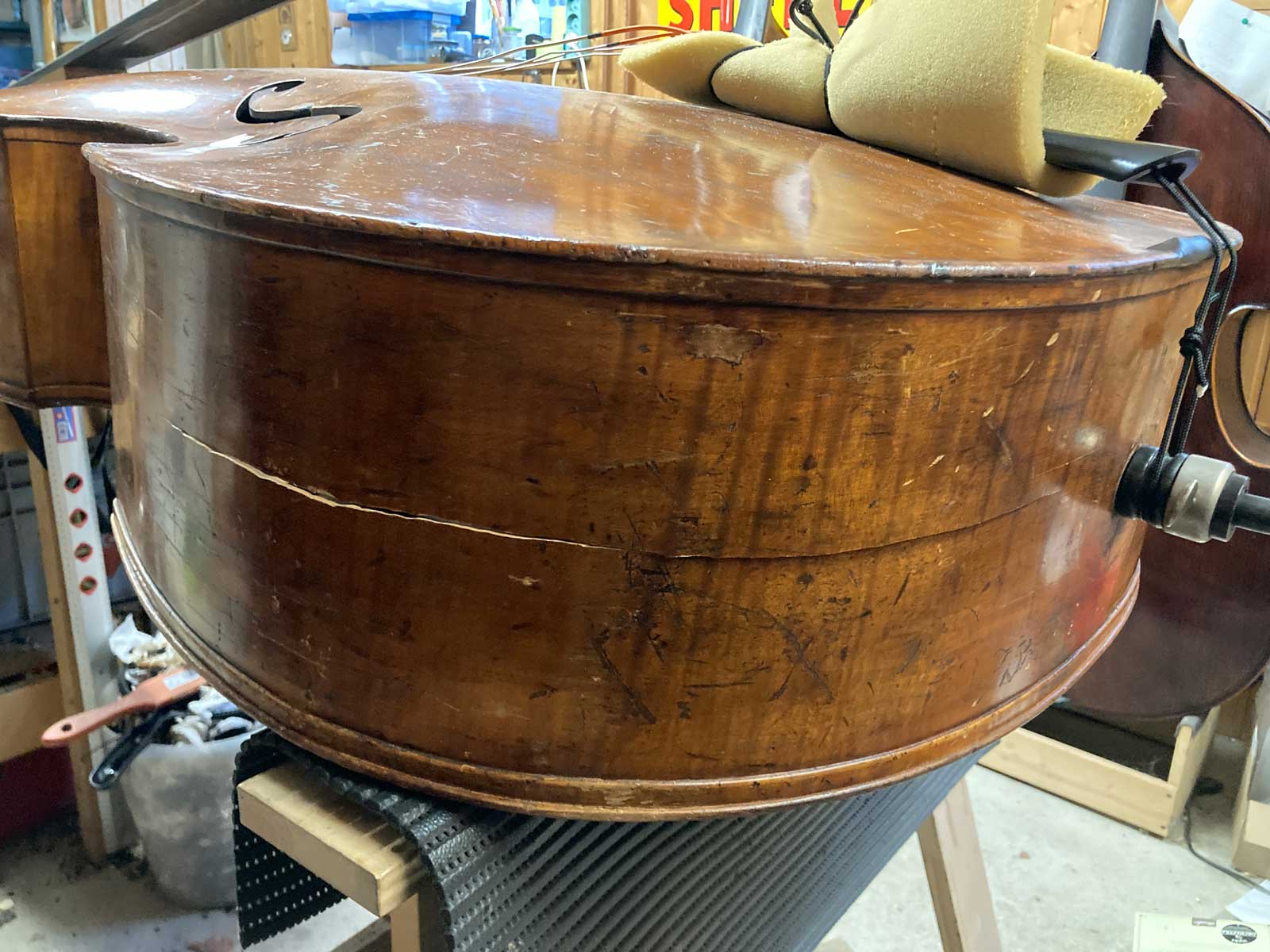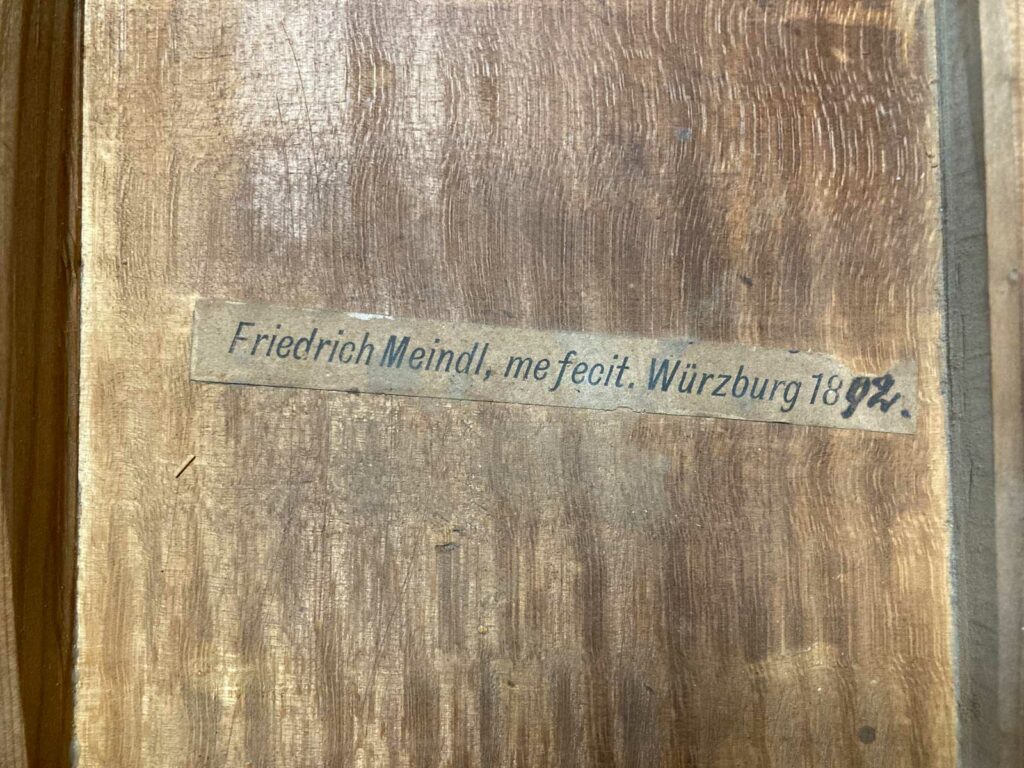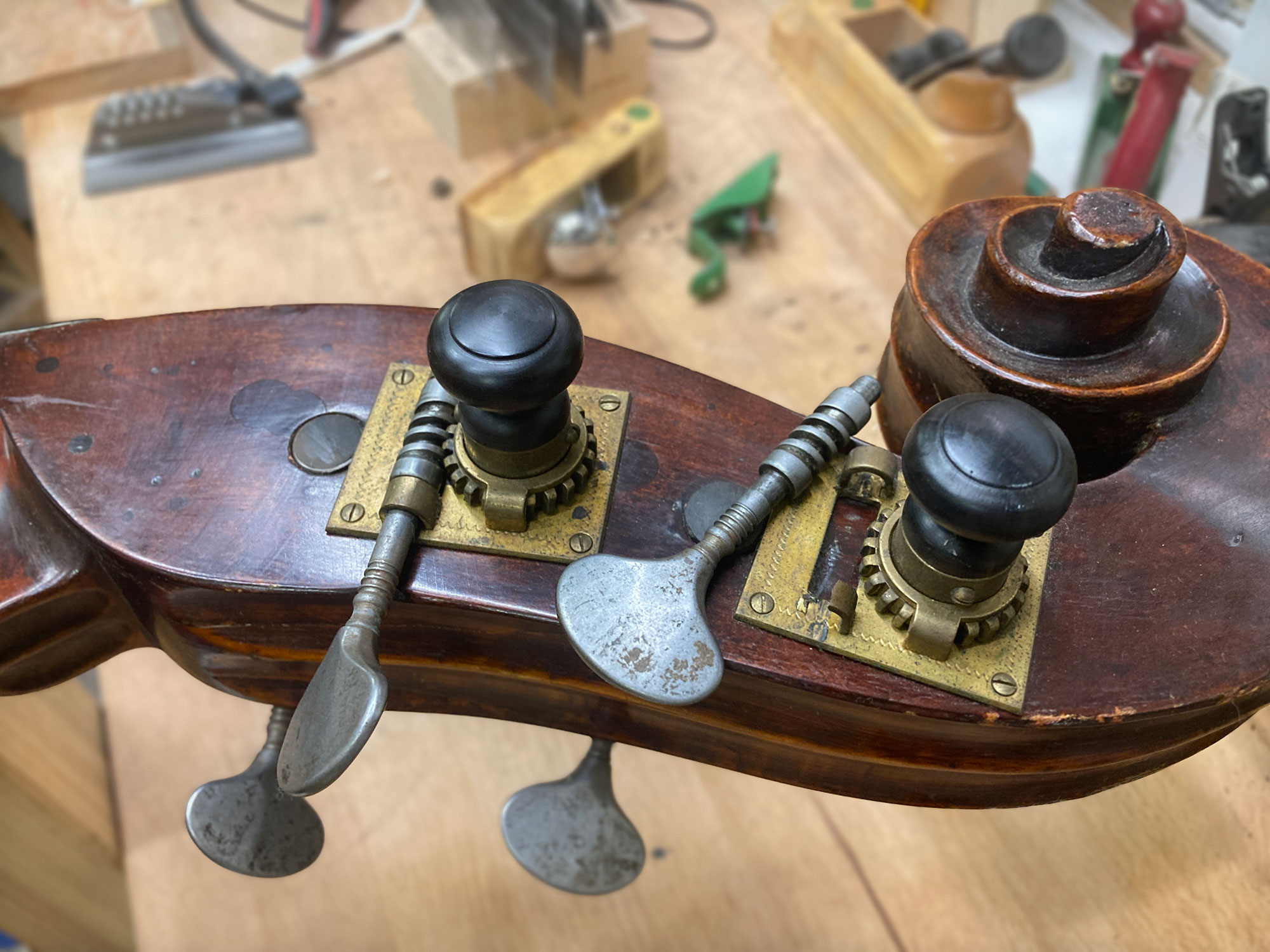Pickups that are mounted under the bridge foot are quite easy to try out quickly on your own bass. It is more difficult to try out pickups for which the bridge has been modified or where the pickup has to be adapted to the bridge. In order to give our customers an impression of the sound character of these pickups, we have mounted them all on one bass. We also made recordings with this bass – that was in 2011, so it’s been a while, but in principle the recordings are still up to date. That’s why they get their own blog post here on our new website.
The pickup signals went directly into the mixing console (sometimes with a Lehle Sunday Driver XLR connected upstream for impedance matching). No tone control or effects, just the dry pickup sound. For a CD recording, the sound would certainly have been further optimized and the respective characteristics of the pickups would have been taken into account with adapted EQ settings – I deliberately refrained from doing this here. The pickups certainly sound different on stage: The amp and speakers color the sound, and of course the room acoustics also play a role. These recordings therefore do not reflect how a pickup sounds when amplified by an amp on stage.
